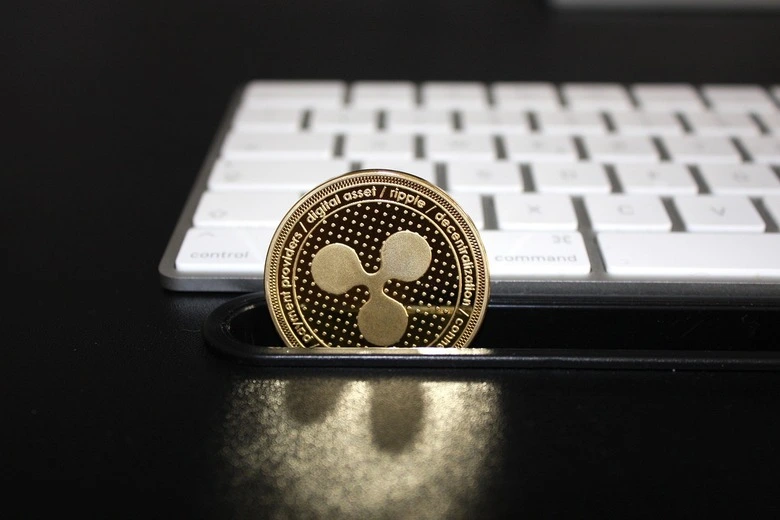In the ever-evolving landscape of cryptocurrency, few names have garnered as much attention and controversy as Ripple. Founded in 2012, Ripple has made waves with its digital asset XRP and its innovative payment protocol known as RippleNet. In this article, we will delve into the fascinating history of Ripple, tracing its journey from the creation of XRP to the development of RippleNet. If you are into Bitcoin trading, you can simply visit an online trading platform like bitcoin-profitapp.com.

Table of Contents
The Birth of XRP
Ripple’s story begins with the creation of XRP, which was initially released in 2012 by Chris Larsen and Jed McCaleb. Unlike other cryptocurrencies, XRP was not built on a blockchain but instead used a unique consensus algorithm called the XRP Ledger. This technology enabled faster transaction speeds and scalability, making it an attractive option for financial institutions.
Ripple’s Vision for a Global Payment Network
Ripple’s founders were quick to recognize the transformative power of XRP within the cryptocurrency community, particularly in the realm of cross-border payments. They envisioned a groundbreaking global payment network that would revolutionize the way financial institutions conducted transactions. This visionary concept aimed to facilitate fast and cost-effective transfers, bypassing the need for intermediaries and significantly reducing transaction fees. Their forward-thinking vision became the cornerstone of RippleNet, a cutting-edge infrastructure that would redefine the landscape of cross-border payments.
By leveraging the capabilities of XRP, Ripple sought to address the inefficiencies and limitations of traditional banking systems. Their vision centered around empowering financial institutions with a seamless, decentralized network that enabled swift and secure transfers across borders. Through RippleNet, these institutions could enjoy enhanced liquidity and establish corridors for cross-border payments, making international transactions faster, more accessible, and more cost-efficient. Ripple’s vision went beyond mere technological advancements; it aimed to reshape the global financial landscape and bring financial inclusion to individuals and businesses worldwide.
The foundation of Ripple’s global payment network rested on the principles of transparency, efficiency, and accessibility. RippleNet’s innovative technology harnessed the power of blockchain and digital assets, offering a secure and decentralized infrastructure for financial institutions to conduct cross-border transactions. By eliminating intermediaries, RippleNet simplified the process, reducing transaction costs and enhancing the speed and reliability of transfers. This visionary approach to global payments positioned Ripple as a leading force in the fintech industry, propelling the adoption of innovative solutions and setting new standards for financial interoperability.
The Emergence of RippleNet
In 2015, Ripple introduced RippleNet, a decentralized network that facilitates seamless transactions using XRP. RippleNet provided a platform for financial institutions to connect and transact with one another, leveraging the speed and efficiency of XRP. This innovation promised to revolutionize the traditional banking system by enabling real-time, borderless payments.
Partnerships and Adoption
To drive the adoption of RippleNet, Ripple forged strategic partnerships with numerous global financial institutions. These partnerships helped Ripple gain traction and expand its network, leading to increased liquidity and the establishment of corridors for cross-border payments. Ripple’s technology began to gain recognition as a viable alternative to traditional banking systems.
Ripple’s Impact on Cross-Border Payments
Ripple’s technology has had a profound impact on the cross-border payments landscape. By leveraging XRP and RippleNet, financial institutions can settle transactions in a matter of seconds, compared to the days it typically takes using traditional methods. This speed and efficiency have the potential to revolutionize global remittances, enabling faster and cheaper transactions for individuals and businesses alike.
Regulatory Challenges and Controversies
Despite its technological advancements and growing adoption, Ripple has faced its fair share of regulatory challenges and controversies. In December 2020, the U.S. Securities and Exchange Commission (SEC) filed a lawsuit against Ripple Labs, alleging that the company conducted an unregistered securities offering through the sale of XRP. This legal battle has cast a shadow over Ripple’s future and created uncertainty within the cryptocurrency community.
The Future of Ripple and RippleNet
While the regulatory challenges have posed significant obstacles for Ripple, the company remains committed to its vision of transforming cross-border payments. Ripple continues to work closely with financial institutions and regulators to navigate the legal landscape and find a path forward. The outcome of the ongoing litigation will undoubtedly shape the future of Ripple and its role in the cryptocurrency ecosystem.
In conclusion, Ripple has come a long way since the introduction of XRP in 2012. Its innovative technology and vision for a global payment network have garnered attention and adoption from financial institutions worldwide. Despite the regulatory challenges it currently faces, Ripple remains at the forefront of the cryptocurrency industry, pushing the boundaries of what is possible in cross-border payments.











Leave a Reply